Let’s just cut to the chase: reviews are important.
But how important?
Super important. Our recent survey of more than 6,500 online shoppers found that 99.9% read reviews at least sometimes; 57% do so when shopping in brick-and-mortar stores.
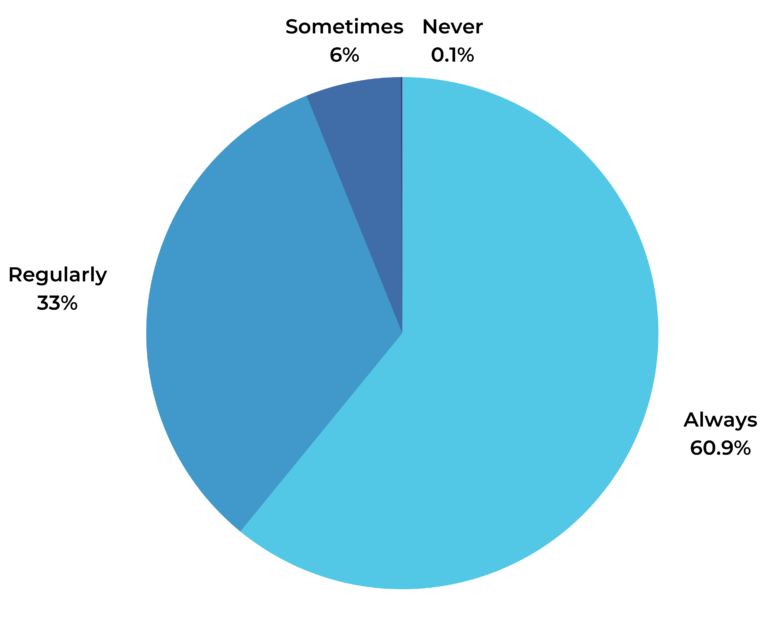
In fact, reviews have grown to be the most important factor impacting purchase decisions, surpassing other important factors including price and free shipping.
How many reviews is enough?
The power of reviews (see what we just did there?) is abundantly clear. By now, the majority of brands and retailers recognize the value of this content – and have started to collect and display reviews. Those that do are rewarded with more traffic, more conversion and sales, and a load of insights to improve products and customer experiences.
But one of the most common questions we get is, “How many reviews do I need?”
The easy answer is, as many as possible. Think of reviews like cookies or cat videos. You can never have too many!

But let’s be real: a vague answer like “as many as possible” isn’t exactly helpful when you’re determining your review generation goals. Sure, one is better than none. But what number will ensure you achieve maximum ROI from your efforts?
Spoiler alert: there’s no one “magic” number of reviews to shoot for. That’s because the ideal number of reviews depends on a variety of factors, including product category and type, among others.
Read on as we take a deep dive into how many reviews you need – as well as some tips for generating more of this conversion-boosting content.
No Reviews = No Good

Let’s start by considering the worst case scenario. A shopper is considering a product, and it has no (zero, zilch, zip) reviews. What happens next?
The answer here is obvious: the shopper is less likely to buy it. And our most recent research backs this claim. A staggering 80% of consumers indicate they’re less likely to buy a given product if it has no reviews. This number is even higher among Millennial and Gen Z shoppers.
In case you need further proof that a lack of reviews deters shoppers (and sinks conversion rates), a previous survey found that 44% flat out won’t buy a product without reviews. Again, this number is even higher among younger shoppers. 49% of Gen Z’ers and 48% of Millennials will abandon a purchase if there are no reviews.
If you’re not generating any reviews, you’re most assuredly losing prospective customers – and leaving a ton of money on the table. So what are you waiting for?
Having Some Reviews is Better Than Having None at All
Consumers depend on reviews, and a lack of them can hurt conversion rates. But if you’re just getting started with reviews, it can seem overwhelming to generate a high volume across your entire catalog.
Well, take comfort in the fact that generating even a few reviews is going to have a positive impact on conversion. Recently, we analyzed activity across 1.5MM+ ecommerce product pages on 1,200 brand and retailer sites and found there’s a 76.7% lift in conversion when visitors are exposed to at least one review, compared to those exposed to none.
Why the conversion lift? Because reading even a single review helps boost shopper confidence. And confident shoppers are more likely to convert.
Consider a consumer shopping online for a new sofa. They don’t have the luxury of trying out their options prior to making a purchase. Of course, they read product descriptions and check out brand-supplied imagery to narrow down their options.
But the purpose of this content is to portray the product in the best light, and the consumer is concerned the product won’t live up to the hype. So they’re hesitant to buy it. As a next step, they seek out feedback from others like them by reading reviews.
Once they read reviews, they’re able to determine that other consumers find this option to be good quality and comfortable. So they confidently make the purchase.
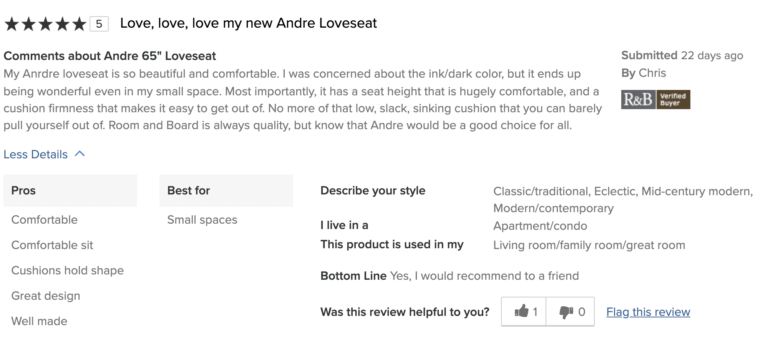
Conversion rates increase when shoppers are exposed to even a single review. So does this mean you can generate just one review for each of your product catalogs and then call it a day? Not quite – if you want to see the largest ROI.
More Reviews = More Impact on Conversion
OK, so we know consumers actively seek out reviews – and that even a single review can boost conversion.
But do shoppers care about the number of reviews available for a given product? And does quantity have an impact on conversion?
Consumers Pay Attention to Review Quantity
First things first: review quantity does indeed matter to shoppers. Our research found that 99% of consumers pay attention to the number of reviews available for a product, at least to some extent.
So, how many reviews do shoppers want? In an ideal world, 43% indicate a given product should have more than 100 reviews.
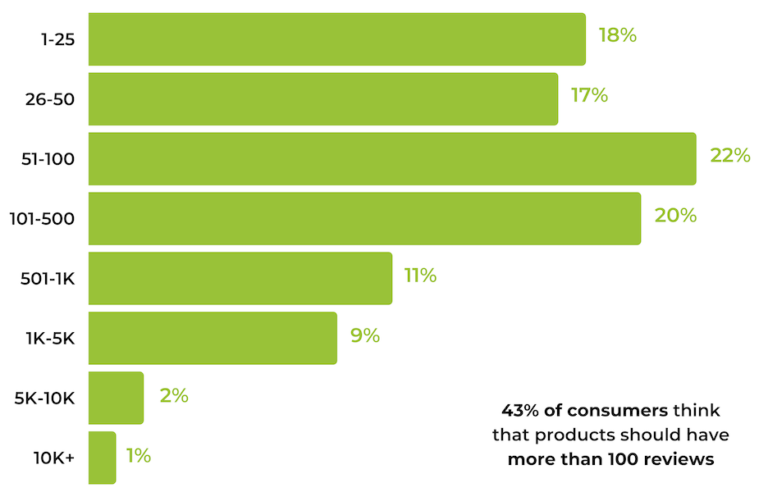
However, consumers tell us that an especially high volume of reviews can have a big (and positive) impact on their likelihood of making a purchase. 64% of those we surveyed said they’re more likely to buy a product if it has 1,000+ reviews than if it has 100. And 54% are more likely to buy a product if it has 10,000+ reviews than if it has 1,000.
A High Volume of Reviews Means Higher Conversion
Sure, shoppers say quantity matters. But does the volume of reviews actually impact the metric that matters most: conversion? In other words, is it worth the effort to continue to collect reviews, even after you’ve generated a decent amount across your catalog?
Absolutely! Our analysis found that the more reviews a shopper is exposed to, the greater the impact on conversion. And the greatest impact is seen when the shopper is exposed to 5,000 or more reviews.
Take a look at the chart below and you’ll see there’s a nearly 3X conversion lift when shoppers are exposed to 5,000+ reviews, compared to those exposed to none.
But how does the conversion rate of those exposed to 5,000+ reviews compare to those exposed to a much smaller volume (1-100) of reviews?
Again, this is a case of the more reviews, the merrier. There’s a 122.1% conversion lift among shoppers exposed to 5,000 or more reviews, compared to those exposed to between one and 100 reviews.
While More is More, But There’s No One-Size-Fits All “Ideal” Number of Reviews
When it comes to reviews, the general rule is “more is more.” You are not going to maximize potential sales without a healthy review presence.
However, it’s important to remember that the right number of reviews for achieving maximum ROI depends on a variety of factors.
These factors include product category (think toys vs apparel), product type (think new vs. older product), and sales channel – among many others.
For example, a shopper will likely pay more attention to review volume when purchasing a new (or new to them) product than they will when they buy a habitual product.
The resources you have at your disposal will also obviously have an impact. The more resources you have (be this budget, people or whatever), the more you’ll be able to focus on collecting reviews in higher volumes, quicker.
What’s important is that you make review collection a priority and then set realistic goals for you – whatever these may look like.
Perhaps you might want to analyze the review presence of your competitors, or maybe you want to take a look at norms on your main retail or marketplace sites. What would showing up where it’d be most impactful for you actually take?
Once you’ve figured out realistic but challenging targets, you’ll want to tap into some common tactics for achieving them…

6 Practical Pointers for Generating a High Volume of Reviews
When it comes to reviews, quantity matters – a lot. Consumers pay attention to the number of reviews available for a product, and a high volume is proven to have a large, positive impact on conversion.
Of course, there’s no magic “one size fits all” recommendation of how many reviews you should have for your products. But one thing is clear: more is more.
How can you generate a high volume of reviews that satisfies shoppers – and helps you achieve the biggest lift in conversion? Here are 6 tips.
1. Send Post Purchase Emails
A lot of shoppers are happy to write reviews – but they need to be asked to do so. The most effective way to do that is to send a post purchase email, asking them to review their recent purchases. In fact, research tells us that up to 90% of reviews are the result of a post purchase email.
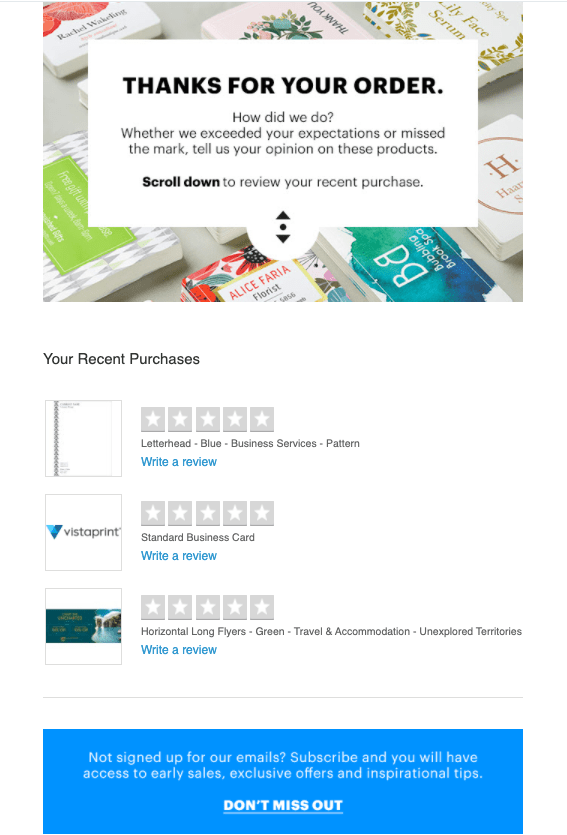
Use a compelling subject line to entice shoppers to open the email. And be sure the email is easy to read from any device – with a clear call to action.
In addition, don’t give up if your first attempt doesn’t result in a review. Nearly a third of consumers (32%) say they need to be asked at least twice before they’ll contribute a review; be sure to send at least two post purchase emails.
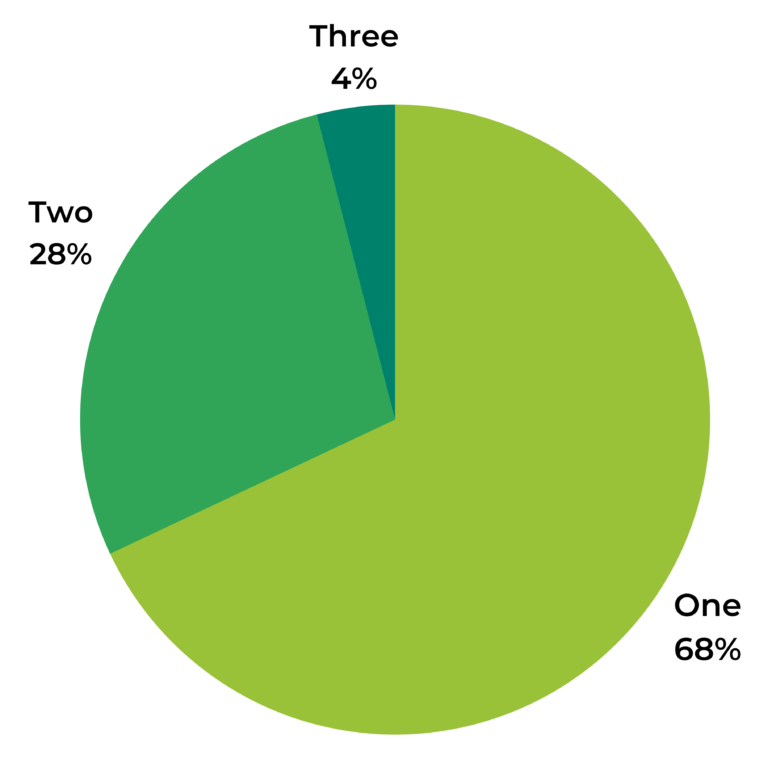
2. Employ a User-Friendly Write a Review Form
If a shopper runs into any trouble when submitting a review, they’re likely to abandon the process altogether.
Simple and intuitive is the name of the game here. Make sure the entire process for writing a review is easy to complete from any device. And make it easy for shoppers to write reviews for multiple products from a single page, rather than navigating to a different page for each review.
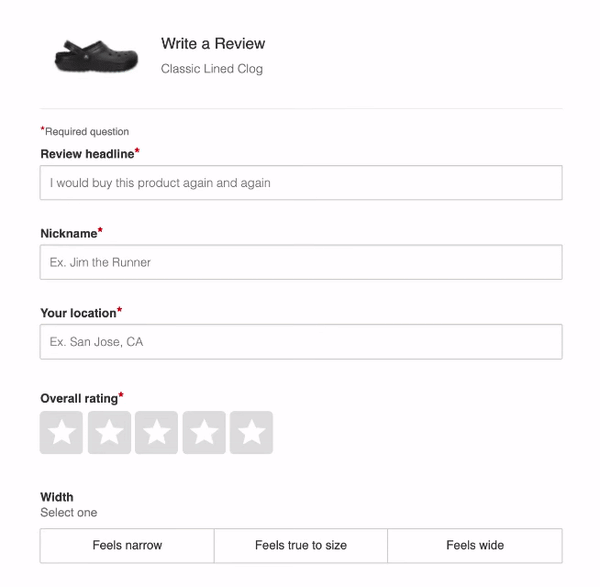
3. Collect Reviews from Online and In-Store Shoppers Across Channels
Collecting reviews from your own direct-to-consumer channel is important. But your products are likely being purchased via retailers and marketplaces, too. So make sure you’re collecting reviews from online and in-store shoppers, regardless of where they buy your products.
One powerful way to do that is to leverage purchase history data from retailers and marketplaces that sell your products. By doing so, you can generate more verified reviews from real customers.
For example, “Receipt. Review. Collect.” allows brands to tap into receipt uploads from 12 million consumers across multiple retailers and marketplaces to generate a steady stream of reviews from verified buyers. Tom’s of Maine, a personal care brand, was able to grow their review volume by 18,600% in just 21 days as a result of “Receipt. Review. Collect” program. Learn more about how it works.
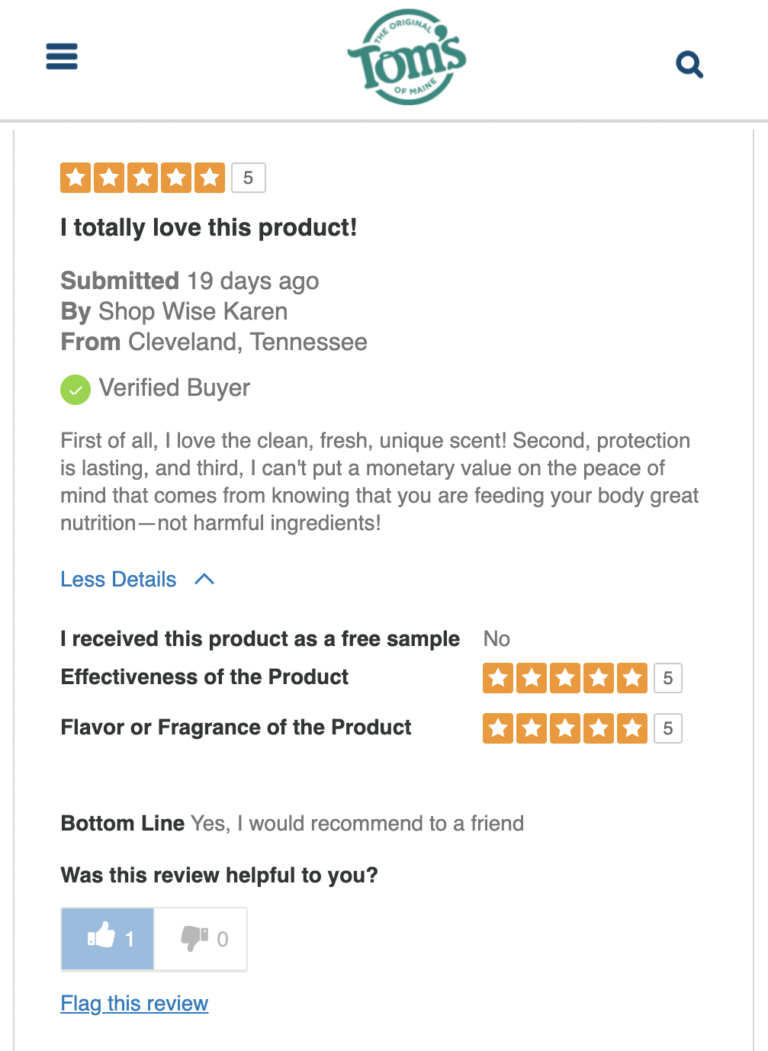
4. Offer an Incentive
For some shoppers, a great experience is enough of a motivator to write a review. But sweetening the deal with the right incentive can increase the volume of reviews you collect. After all, a recent survey found that nearly three-quarters (73%) of consumers indicate they’d be motivated to write a review if they were offered an incentive in return.
There are a number of different incentives that can help boost the volume of reviews you collect – including loyalty points and entry into a sweepstakes. But one stands above the others: free samples.
91% of consumers say they’d be motivated to write a review if they received a product free of charge. What’s more, we’ve found that brands and retailers that partner with PowerReviews experience an average response rate of 86%. In other words, 86% of those who receive a free sample go on to write a review. Clearly, product sampling can be a great way to generate a high volume of reviews – quickly.
5. Syndicate Content Across Channels
It’s important to generate a high volume of reviews to boost conversion on your own dot com. But if you’re a brand, you probably also sell your products through other channels – such as retail partners and Amazon. It’s critical that shoppers can find plenty of review content for your products, wherever they shop for them.
Your ratings and reviews partner should make it easy for you to share – or syndicate – your review content to your key retail partners and Amazon. So be sure to ask them about it.
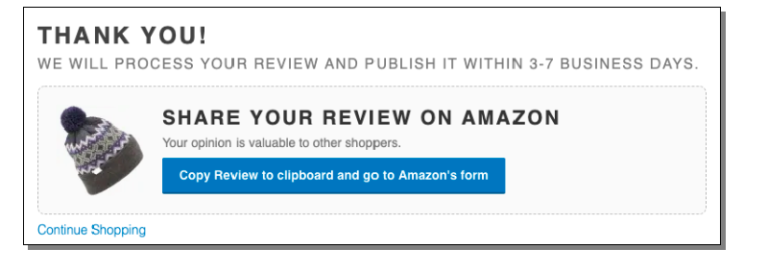
6. Measure and Optimize to Boost Conversion
It’s important to continuously measure the success of your review collection efforts. Otherwise, it’s impossible to see what’s working well – and what’s not. You can then use these insights to improve your collection efforts.
For example, if your collection rate isn’t as high as you’d hoped, you can make data-based optimizations to your write-a-review form – and then measure to see how (or whether) this impacts your collection rates.
It’s Time to Prioritize Review Volume
Review volume matters to consumers. And a high volume of reviews is proven to positively impact conversion rates – a lot.
Make it a priority to collect a high volume of reviews across your product catalog. Schedule a demo with PowerReviews to see firsthand how we can help.




